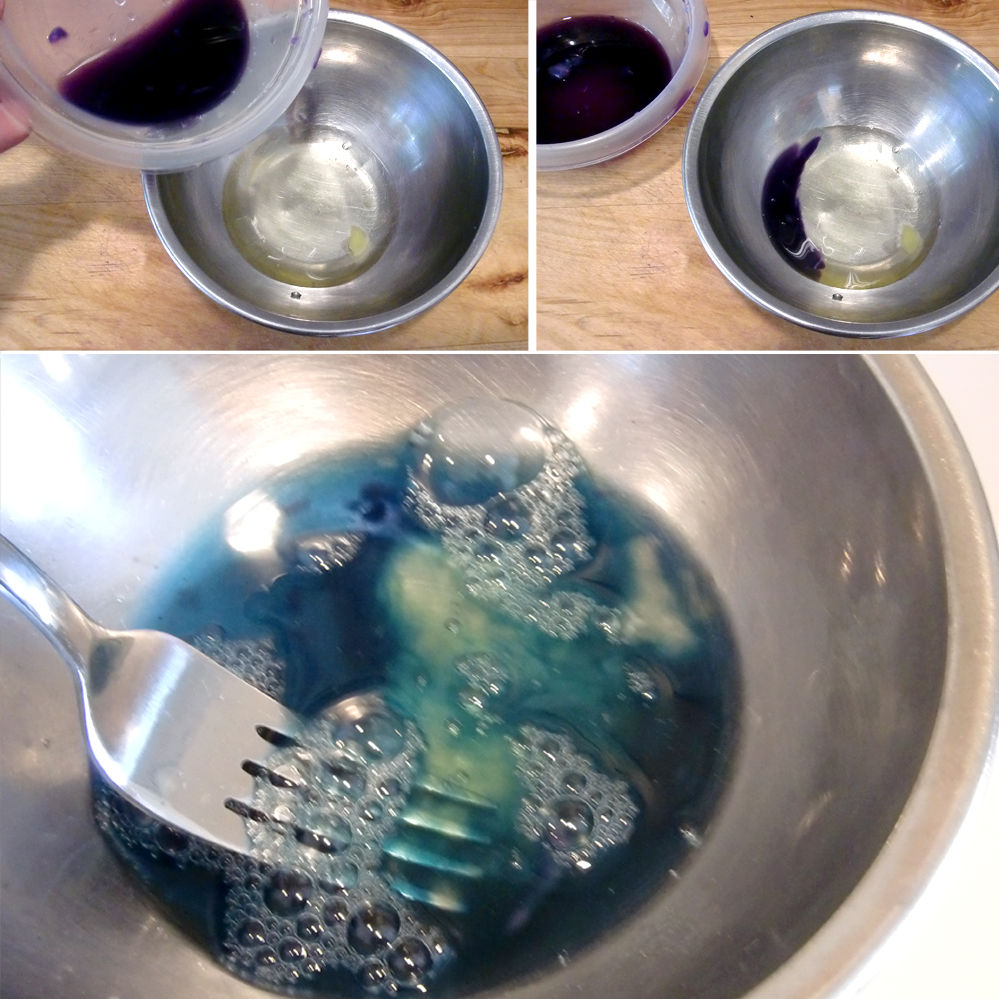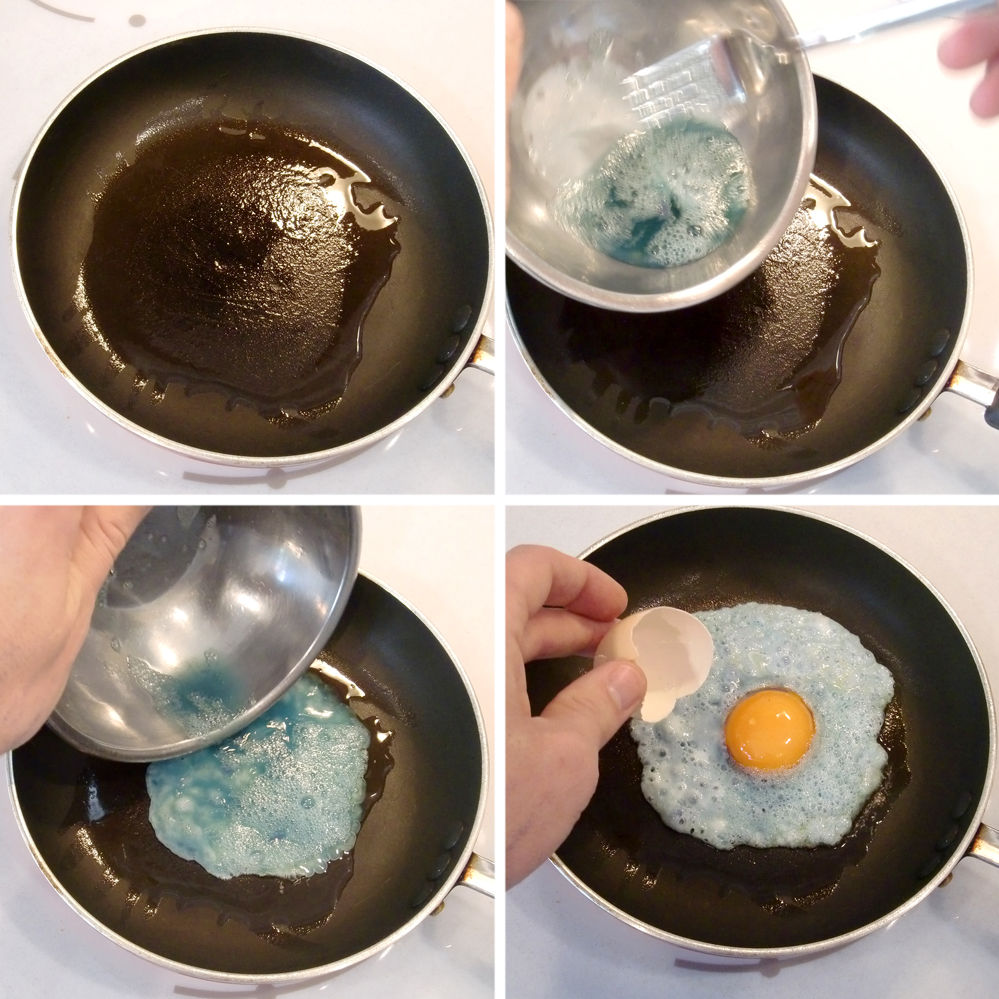Question ID: 3000-5911-1-2-3-4
Recipe Description
ingredients: eggs red cabbage .materials: microwave cheesecloth mixing bowl
With a sharp knife, coarsely chop about 2 cups of read cabbage. Then, transfer cabbage into a microwave-safe bowl with lid and microwave on high for about 4-5 minutes. This will soften your cabbage and release the juices. After microwaving your cabbage will be very hot, allow to cool at room temperature or in the fridge until you can safely handle the cabbage. When your microwaved cabbage has cooled, place the soft cabbage into a doubled sheet of cheesecloth. Gather the edges of your cheesecloth and squeeze the cabbage over a mixing bowl, collecting the purple cabbage juice.
The reaction occurs between the egg white and the cabbage juice, therefore you're going to need to separate the egg yolks from the white. To separate egg yolks is easy: crack an egg over a bowl and carefully separate the shell into two halves without spilling any of the yolk (some of the white may fall into the bowl, that's alright). You should now have an open egg in one hand and an empty shell half in the other. Carefully pour the full egg into the empty shell, the yolk should pour out and rest on the empty shell and the egg white should fall into the bowl below. Continue pouring the egg back and forth between the egg shells until the yolk remains. Keep yolk in a shell half and set aside for later.
Brainy member BrittLiv explains:"Naturally, red cabbage has a colour somewhere between red and purple, depending on the pH-value of the soil it is growing in. This colour change occurs due to the pigment flavin, which belongs to a group of water soluble plant pigments called anthocyanins (For those of you, that don't know what the pH value refers to, it is the measure of the acidity (pH < 7) or basicity (pH > 7) of an aqueous solution). In this Instructable, we are making use of the fact, that flavin is a natural pH indicator and that egg white has a pH value of about 8. These slightly alkaline condition result in a colour change to a blueish-green."Previous, unclear science explanation:The purple pigment in red cabbage is called anthocyanins and can change colour in response to changes in pH. The acidity in red cabbage causes the pigmentation to be purplish, but when introduced to an alkaline condition (like the whites of eggs) changes to a blueish-green. To make your own green eggs pour a small amount of the red cabbage juice into your bowl of egg white and gently whisk together, you should see a colour change almost immediately.
Time to cook some eggs. Heat your range to a medium heat and lightly oil a frying pan. Pour your green egg whites into the pan, then gently add the yolk you set aside (you did save it, right?) onto the top of the cooking egg white. Cook egg to your desire.
I had so much fun making green eggs that I made my eggs two ways: sunny side up and scrambled. I'm sure this would also work if you wanted to make an omelet with them, too. Of course these eggs are completely safe to eat, so gobble them up! I noticed a slight change in flavour in the eggs after adding the red cabbage juice, almost a sweet taste and not unpleasant. Though this might not be an everyday thing it sure is a fun twist on boring old eggs, give it a try! Have fun! Did you make your own green eggs? Post a picture of your version of this project in the comments below and earn yourself an eggy digital patch and a 3-month Pro membership to Instructables.com.
Question & Answer
Question: Select the incoherent image in the following sequence of images.
Choices:
 |
 |
 |
 |
|---|---|---|---|
| (A) | (B) | (C) | (D) |
 |
|---|
 |